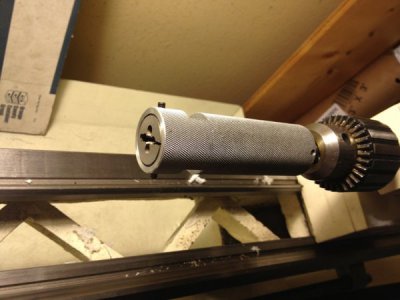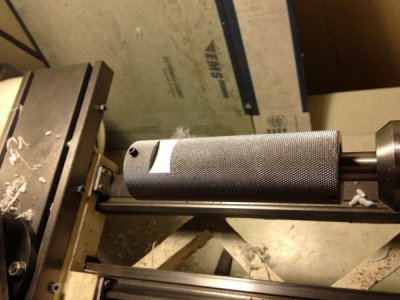- Joined
- Jul 17, 2013
- Messages
- 99
The tap follower is great, but how did you guide
the die with the chuck ?
I just pushed the Jacobs chuck into the back of the die/handle.
The minor dia. of the 5/16-24 is .280. If I'm reading this right you then only have a .060 wall (.400-.280) With the harder steel, I'll guarantee you that it's heating up and crushing. I never cared for Tap Magic, it was either dark cutting oil or Kool Tool for me.
http://www.engineershandbook.com/Tables/threadlimits.htm
Well, that's part of my problem sounds like.
I also turned it to the MAJOR diameter of 0.3125", which is another place I messed up.
Where are you picking up the minor diameter as .280? I see .260" as minor diameter. Are you using "pitch diameter minimum?" I'm not being confrontational, just trying to learn. LOL
This link has the minor diameter listed as .2614"
I guess I need to sort out a different place to thread these two parts together. I'd like for the final OD of the pen to be 0.335″.
I'll pick up some Kool Tool and give it a shot, I guess I aught to grab a machinist book as well.



